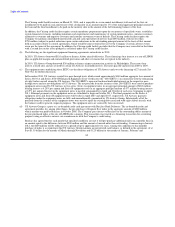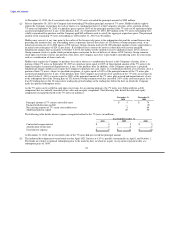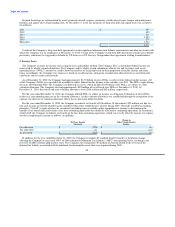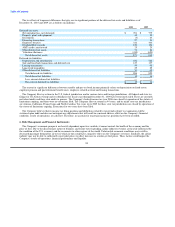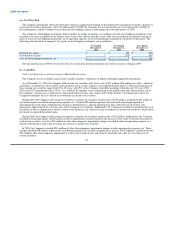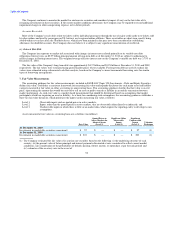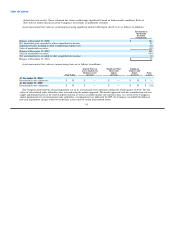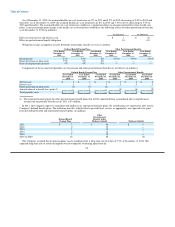US Airways 2010 Annual Report Download - page 91
Download and view the complete annual report
Please find page 91 of the 2010 US Airways annual report below. You can navigate through the pages in the report by either clicking on the pages listed below, or by using the keyword search tool below to find specific information within the annual report.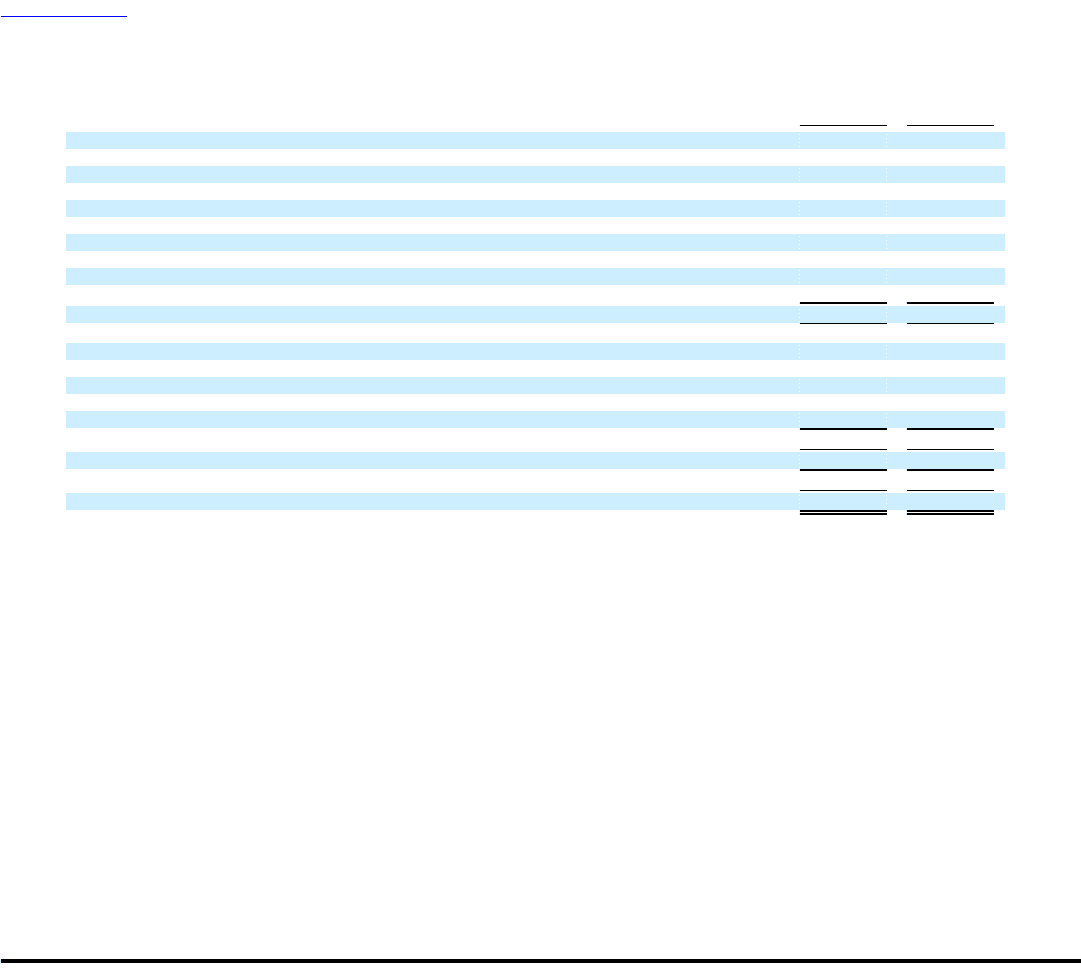
Table of Contents
The tax effects of temporary differences that give rise to significant portions of the deferred tax assets and liabilities as of
December 31, 2010 and 2009 are as follows (in millions):
2010 2009
Deferred tax assets:
Net operating loss carryforwards $ 701 $ 779
Property, plant and equipment 38 30
Investments (3) 63
Financing transactions 27 41
Employee benefits 322 346
Dividend Miles awards 120 126
AMT credit carryforward 25 25
Other deferred tax assets 71 26
Valuation allowance (430) (623)
Net deferred tax assets 871 813
Deferred tax liabilities:
Depreciation and amortization 642 582
Sale and leaseback transactions and deferred rent 127 137
Leasing transactions 59 45
Long-lived intangibles 25 25
Other deferred tax liabilities 33 40
Total deferred tax liabilities 886 829
Net deferred tax liabilities 15 16
Less: current deferred tax liabilities — —
Non-current deferred tax liabilities $ 15 $ 16
The reason for significant differences between taxable and pre-tax book income primarily relates to depreciation on fixed assets,
employee pension and postretirement benefit costs, employee-related accruals and leasing transactions.
The Company files tax returns in the U.S. federal jurisdiction, and in various states and foreign jurisdictions. All federal and state tax
filings for US Airways Group and its subsidiaries for fiscal years through December 31, 2009 have been timely filed. There are currently
no federal audits and three state audits in process. The Company's federal income tax year 2006 was closed by operation of the statute of
limitations expiring, and there were no extensions filed. The Company files tax returns in 44 states, and its major state tax jurisdictions
are Arizona, California, Pennsylvania and North Carolina. Tax years up to 2005 for these state tax jurisdictions are closed by operation of
the statute of limitations expiring. Extensions for two states have been filed.
The Company believes that its income tax filing positions and deductions related to tax periods subject to examination will be
sustained upon audit and does not anticipate any adjustments that will result in a material adverse effect on the Company's financial
condition, results of operations, or cash flow. Therefore, no accruals for uncertain income tax positions have been recorded.
6. Risk Management and Financial Instruments
The Company's economic prospects are heavily dependent upon two variables it cannot control: the health of the economy and the
price of fuel. Due to the discretionary nature of business and leisure travel spending, airline industry revenues are heavily influenced by
the condition of the U.S. economy and the economies in other regions of the world. Unfavorable economic conditions may result in
decreased passenger demand for air travel, which in turn could have a negative effect on the Company's revenues. Similarly, the airline
industry may not be able to sufficiently raise ticket prices to offset increases in aviation jet fuel prices. These factors could impact the
Company's results of operations, financial performance and liquidity.
90







